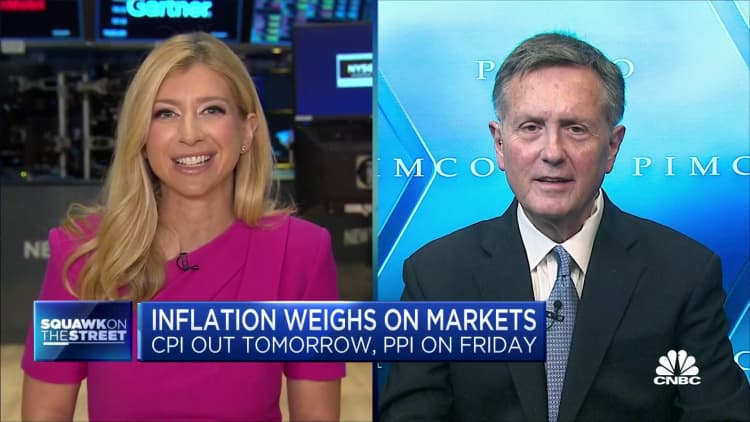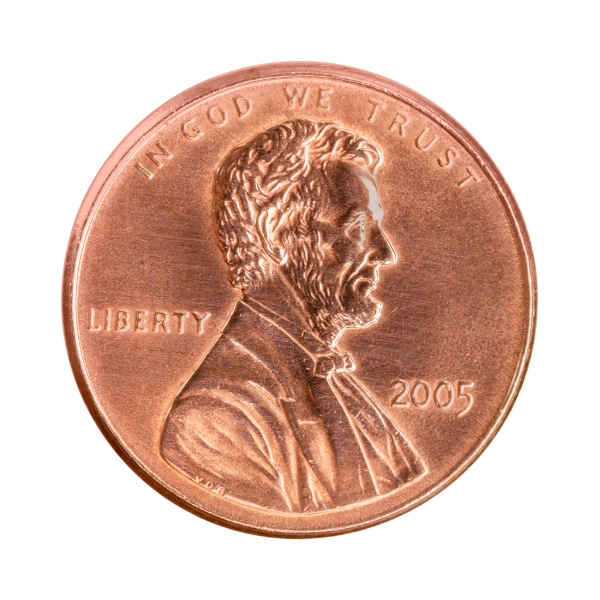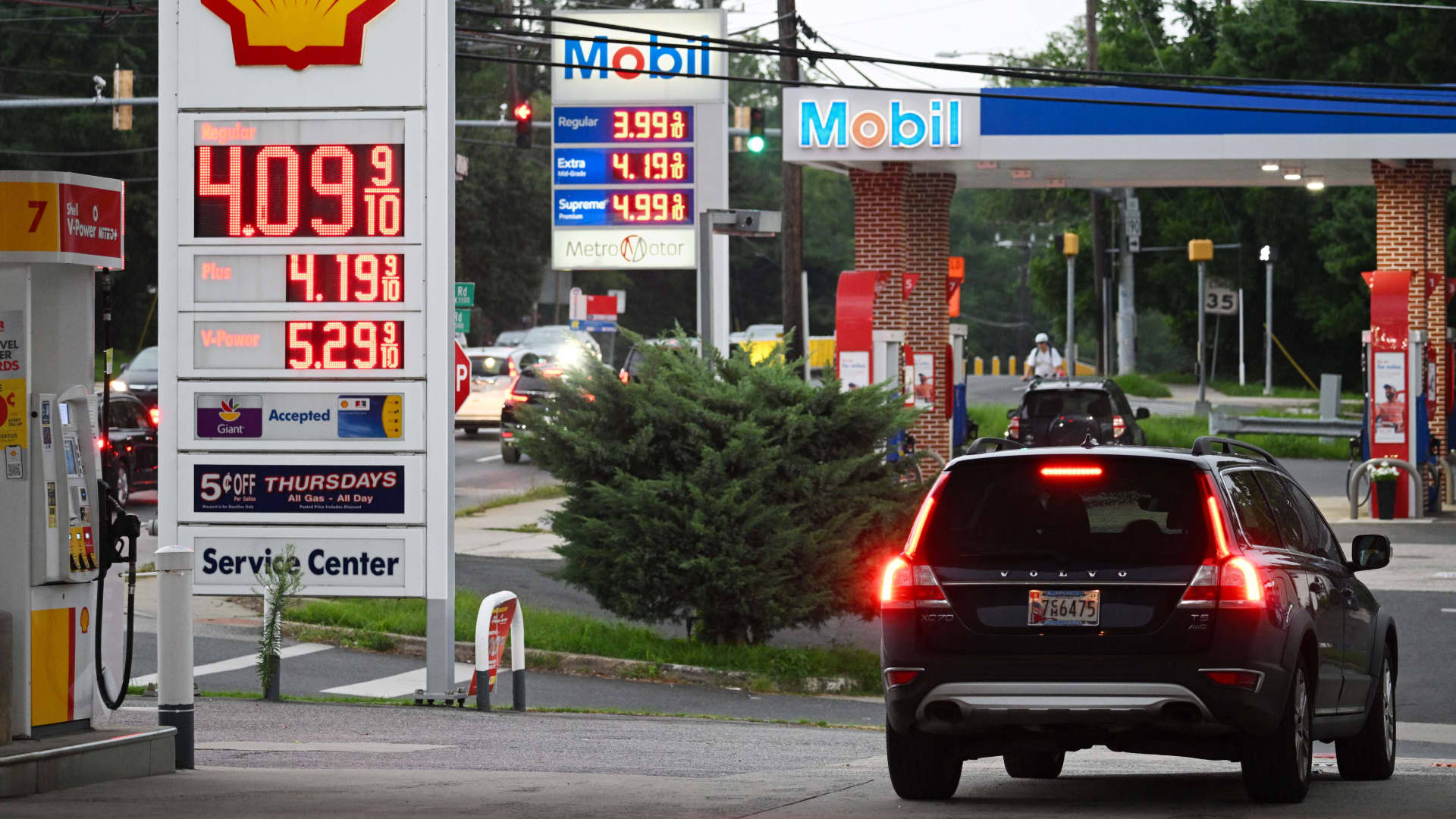Gas station signboards display prices in Bethesda, Maryland on August 6, 2023.
Mandel Ngan | AFP | Getty Images
Thursday’s consumer price index report likely will show that the pace of price increases is easing, but not enough to get the Federal Reserve to retreat on its inflation fight.
If the Wall Street consensus as gauged by Dow Jones is correct, the closely watched consumer price index will show a monthly increase of 0.2% for July and a 12-month rate of just 3.3%.
The latter number pales in comparison to the 8.5% annual rate that the CPI registered a year ago, a reading that was just off the highest level in more than 40 years. Excluding food and energy, the monthly estimate also is 0.2%, though the 12-month rate is being put at 4.8%.
If that all sounds like at least marginally good news, it is. Multiple data points have indicated that inflationary pressures have eased considerably from their 2022 levels.
But history has shown that inflation is stubborn and can last longer than expected once it becomes elevated and entrenched. And the current round is still making an impact on consumers, evidenced by the CPI’s nearly 19% rise since bottoming in April 2020 during the early days of the Covid pandemic.
“We can feel confident that inflation is moving in the right direction,” said Mark Zandi, chief economist at Moody’s Analytics. “But I don’t think we should be overly confident.”
Zandi goes along with the consensus on the CPI estimate and sees inflation moving lower, perhaps even meeting the Federal Reserve’s 2% annual target around this time in 2024.
For instance, housing-related costs, which make up about one-third of the inflation index weighting, are dropping. There also are signs that wage gains are abating. The employment cost index, a key Fed inflation measure, showed a 4.6% increase in the second quarter, down from an all-time peak of 5.7% from the same period in 2022, according to a data set that goes back to 2002.
But Zandi also sees danger signs: Health insurance costs, for instance, are expected to start climbing now that a statistical adjustment the Bureau of Labor Statistics uses expires. That adjustment has caused the health insurance component of the CPI to show a 24.9% slide over the past year that now should reverse.
Also, gas prices have soared this summer as the cost of U.S. crude jumped nearly 16% in July.
A gallon of regular unleaded now costs $3.82 on the national average, up more than 8%, or nearly 30 cents a gallon, from the same time in July, according to AAA.
Oil price on the rise
Still, Zandi thinks that, at the very least, the recent trends should convince the Federal Reserve to stop raising interest rates.
“If inflation sticks to the script, that’s enough to convince the [rate-setting Federal Open Market Committee] at least in aggregate not to raise rates any further,” he said. “The bar for lowering rates, though is high, because inflation is not benign and still above target. They will wait until they’re absolutely sure that inflation is going to get back to target before they start cutting rates.”
No ‘mission accomplished’ yet
Former Fed Governor Richard Clarida isn’t so sure the Fed should end its current rate-hiking cycle, which began in March 2022 and has seen 11 increases worth 5.25 percentage points.
Now a global economic advisor for asset management giant Pimco, Clarida said his former colleagues need to send the message that they’re continuing the inflation fight.
“They’ll want to keep their options open. In particular, they don’t want to declare ‘mission accomplished’ too soon,” he said Wednesday during an interview on CNBC’s “Squawk on the Street.” “But they also can’t be tone-deaf. They need to acknowledge the data is improving.”

At the macro level, the Fed rate hikes have appeared to do minimal damage. After declining in the first two quarters of 2022, GDP hasn’t been negative since and is tracking at a 4.1% annualized growth rate in the third quarter, according to the Atlanta Fed.
Americans, though, remain largely dissatisfied with the state of the economy and have punished President Joe Biden with an anemic approval rating of just 39% in the latest CNBC All-America Economic Survey in July.
That’s because damage from the elevated inflation levels and the rate hikes are often felt more in the micro economy, such as small businesses and household debt levels.
“A lot of people rely on both credit card and home equity lending to make it all happen when they’re launching a small business, and credit card interest rates have actually been increasing slightly faster than fed funds,” the central bank’s key interest rate, said Patrick Reily, co-founder of Uplinq, a global credit assessment platform for small business lending. “Banks have been tightening credit criteria as well.”
Reily said the rate hikes and loan default rates for small businesses generally rise in tandem, causing a credit crunch that could persist.
“We have now hit the point where the Fed is simply putting small businesses out of business,” he said. “When you put the chokehold on small business, really what you’re doing is you’re saying, ‘All those great ideas that are going to develop and turn into something, we’re going to settle for less of those.’ And it’s not a fair playing field, right?”
On the bright side, if the data continue to cooperate, the Fed at least can take its foot off the monetary policy brake. Regional presidents John Williams of New York and Patrick Harker of Philadelphia both made comments this week indicating they are entertaining putting an end to the rate increases.
Parsing the numbers
Whether the Fed indeed does stop will depend on data points such as the CPI reading.
Breaking down Thursday’s report and the state of inflation could end up being more about the details than what the headline numbers say.
The shelter and health care components will be closely watched, as will energy and food, as always. Trends in things such as core services also will get attention, as will more granular items like appliances.
For instance, Bank of America noted that real-time data is showing that retailers are cutting prices across categories for large appliances. The bank’s gauge of prices for the category is down 5% so far this year, possibly pointing to a broader trend of softening inflation.
Markets, though, are still a little nervous.
A bond market measure of inflation pricing, known as a forward rate, is pointing to a one-year rate of 4.83%, after falling below 4% in May.
And for businesses and consumers, that could be trouble. Credit card debt in the second quarter surpassed $1 trillion for the first time, and Uplinq’s Reily said he expects small business debt default rates to escalate as interest rates stay high.
“We’ve got a pipeline full of growing delinquencies. All the trends are showing no abatement,” he said. “So this is something that’s going to get a little worse before it gets better.”








































